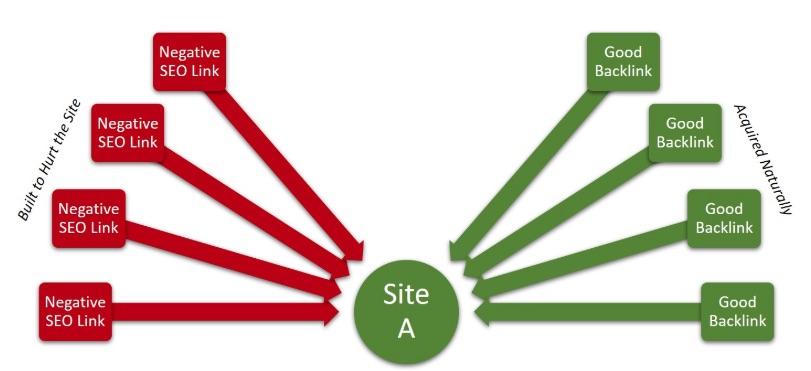
Negative SEO is the practice of intentionally harming another site through shady and dishonest practices, such as linking from spammy sources.
Negative search engine optimization is the practice of intentionally harming the organic search traffic of a third-party site. The process usually involves linking from a spammy site — scraper sites, porn, malware-infected — to a competitor’s.
Webmasters cannot prevent negative SEO. Thus it creates much fear among ecommerce owners and managers.
But that fear is overrated and possibly unnecessary. Since its real-time Penguin 4.0 algorithm went live in 2016, Google claims that spammy links will not harm traffic unless the site has engaged in nefarious actions itself, such as unnatural link schemes or on-site keyword stuffing.
To be sure, negative SEO can extend beyond spammy links. Fake reviews and fake complaints to Google My Business, for example, can cause damage. In addition, more serious tactics (crimes) involving hacking, inserting malware and spam, and denial of service attacks can all impact organic search traffic.
Traffic Drops
Many factors can cause drops in organic search traffic. Rarely, if ever, is it negative SEO.
Technical issues could pop up inadvertently from your development team that prevent crawling and indexation. Google could update its algorithm. A critical section of content could be removed from your site. These are all innocent (and common) actions that can hurt organic search traffic.
No-so-innocent reasons include using on-site keywords solely for search engines or engaging in deceptive linking among, perhaps, related websites.
If the deceptive links once helped your site rank and then Google devalues them, the site would experience a drop in traffic. That is not a penalty. It’s Google detecting an improper practice and removing its ability to impact search results.
Penguin Algorithm
Google rocked natural search results with its Penguin algorithm in 2012, targeting web spam in general and poor linking practices specifically.
Unfortunately, for the first four years Google updated Penguin in batches. If it received a Penguin-related penalty, your site would feel the performance impact until the next Penguin update.
In 2016, Google incorporated Penguin into its real-time algorithm. This allowed sites to recover from a Penguin-induced penalty as soon as Google noticed that the site and its link profile had changed.
The same 2016 update also changed how Google evaluates bad links — from demoting sites with poor links to just devaluing those links. That means, presumably, that Google no longer counts poor links against a site. Instead, it just ignores them. After all, every site receives spammy, unwanted links. Google’s change recognized that dynamic.
Thus it’s unlikely that a site practicing positive SEO is impacted by negative links.
…every site receives spammy, unwanted links.
Disavow?Google analyst Gary Illyes said that out of hundreds of negative SEO requests he’s reviewed, all of the sites had other issues that caused the drop in organic search performance. He has never seen an instance of negative SEO impacting rankings.
Interestingly, Google’s disavow tool remains in place. Why is it necessary if spammy links have no impact?
Google’s John Mueller has reiterated several times that Google is algorithmically designed to ignore bad links automatically. The disavow tool is “really something that you only really need to use in really extreme cases,” such as if you receive a manual penalty message from Google.
Source: https://www.practicalecommerce.com/
